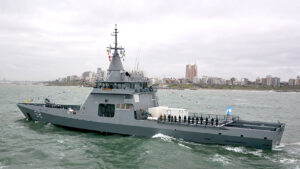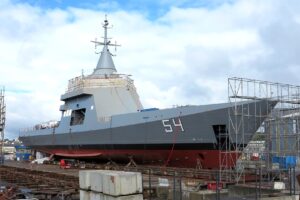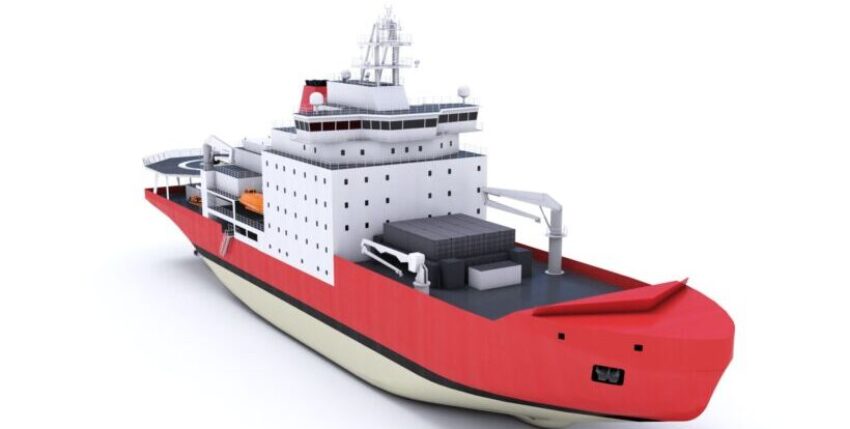Icebreaker in Argentina - Almirante Irizar
The main burden of the currently possible seasonal voyages to supply the thirteen Antarctic stations in the small but elongated sector of Argentina is borne by the almost 45-year-old supply icebreaker ALMIRANTE IRIZAR. Although a fire in the generator system put the 15,000 tonne ship built by Wärtsilä in Finland out of service for ten years, it had an eventful history even before that: troop transporter and hospital ship in the Falklands War, then the unsuccessful attempt to free the "Magdalene Oldendorff" from the Antarctic pack ice in 2002 - and the fire on board in 2007. After the 295 crew members and Antarctic research guests boarded the 10 lifeboats and were picked up by passing ships and the Argentinian navy, the captain was the only one to remain on board until additional naval security forces were able to put out the fire. The subsequent repair at the Tandanor shipyard, which had been designed too sparingly, dragged on endlessly and ultimately became more expensive than buying a new similar ship - a not entirely unknown phenomenon of state shipbuilding here too.
Extended area of responsibility
The work was carried out after all, and since 2017 the ALMIRANTE IRIZAR has been regularly supplying the Argentinian counter coast on the seventh continent during the southern hemisphere summer season. This is because activities in this part of the world have increased rapidly and urgently require a visible presence in the 200 miles of the exclusive economic zone. During the shipyard's long laytime, additional research capacities were set up on board so that this ship has since been able to fulfil a variety of tasks for Argentina.
New multi-purpose icebreaker ordered
The government in Buenos Aires has now come to a decision on a new building: Tandanor (Talleres Navales Dársena Norte S.A.C.I.y N.) in Buenos Aires, located at the mouth of the Riachuelo, is to start building a polar vessel for Armada Argentina in 2022/23. It is to be built under licence according to the plans of the Finnish Aker Arctic shipyard in Helsinki, which is renowned for icebreaker construction (frequent sales and acquisitions in this sector are constantly changing the names of the Scandinavian shipyards!) Construction is scheduled for completion in 2028. It is part of Argentina's intention to rejuvenate its maritime assets.
New tasks for the MEKO corvettes
Incidentally, Tandanor is also the shipyard that has just been commissioned by the Navy to convert the six corvettes of the ESPORA class (Blohm + Voss, MEKO 140 A16, built in Argentina from 1980) from 4x MM38 Exocet to dual RHIB with launching device. These sea-targeting FKs with double-barrelled Breda 40 mm guns are located on the bulwark - still aft of the helicopter landing deck - leaving room for more useful equipment for patrol tasks. The background to this is the almost exclusive use of these units for monitoring the 200-mile economic zone, in which the state suffers losses of two billion dollars a year due to predatory fishing. Starting with the PARKER and ROSALES units, the dismantling is to be developed and then implemented within two years. This also involves renewing the propulsion systems, which are well over 30 years old and are currently considered to be the weak points not only of the corvettes, but also of the four MEKO 360 H2 frigates of the ALMIRANTE BROWN class.
Purchase of the GOWIND corvettes
The fact that this task profile has been an absolute priority for Argentina for some time is also demonstrated by the purchase of the four GOWIND-class corvettes in France (ex-ADROIT of the Marine Nationale) in 2019. However, if you have asked yourself from time to time since the purchase decision three years ago why in the world a nation like Argentina with sixteen shipyards (two of which are state-owned) is putting these "ugly ducklings" in the pond in front of its house, then the critical comments of an Argentine shipbuilding engineer outside the navy will give you an insight into the not entirely uncontroversial steps of defence procurement in the South American country.

Why not build your own OPV?
In the run-up to the purchase decision, he had compared the world market for OPVs of this size and, in contrast to the navy, had established that the GOWIND class was almost 60% more expensive than the worldwide offer; that the French model with the least equipment was an absolute economy version - underpowered, minimally armed and without any track record in the background. No other country had ever bought this in-house development of the state-owned Naval Group - even the Marine Nationale had only reluctantly taken this model into its inventory as a sponsored sales model! For the conditions that were emerging, a country like Argentina - as all the neighbouring South American states do, of course, not without certain problems, but with national added value - could have put such a ship on the shelf in a much more advantageous way.

The no-alternative purchase decision
In addition to the many back and forths in this matter, the tragedy surrounding the sunken submarine SAN JUAN probably pushed the OPV issue into the background of public interest. Ultimately, the decision in favour of an external purchase must have been made shortly before the parliamentary elections based on the vote of a group of leading naval officers who were highly interested in a quick and problem-free solution and were in a position to underpin their purchase recommendation as "without alternative". Fait accompli - as they say, where the ships are built!
Any questions?
And in case you were wondering how many of the five Super Etendards naval jets delivered by France in 2019 are already flying - the answer is: none!









